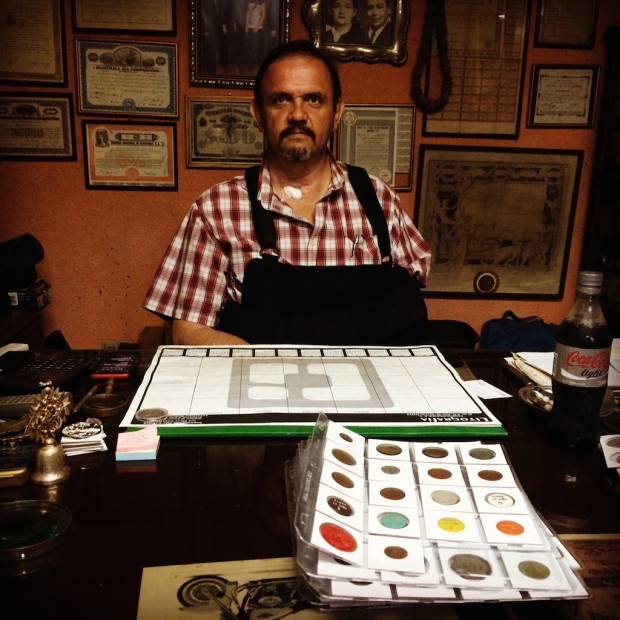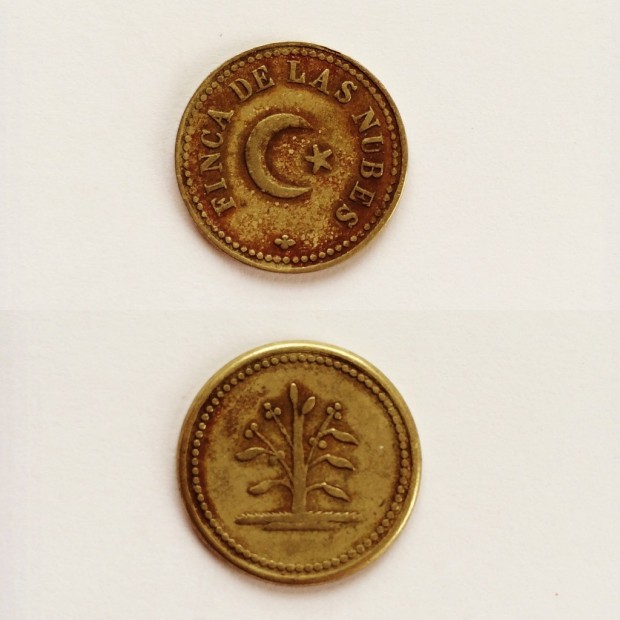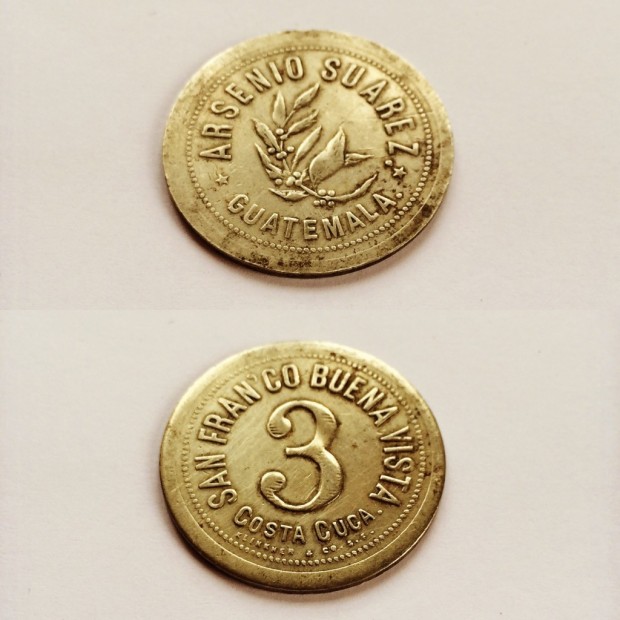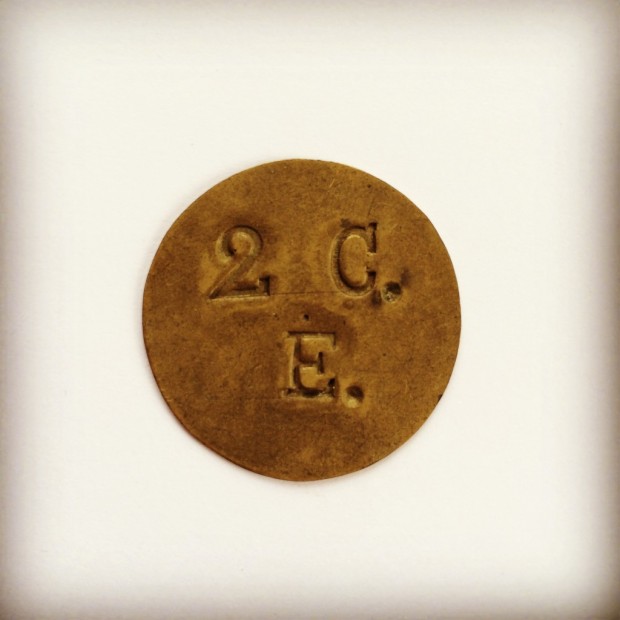When I was a kid, I collected coins. I know, I know. TOTAL nerd.
Eventually, I stopped collecting them. But I never really got over them. And I never got rid of them. They are still in a bedroom closet in the house where I grew up. Next to my baseball cards.
Over the past few years, I have found an occupational pretext to reengage unapologetically with my childhood coin obsession: Guatemala’s fichas de finca.
Fichas de finca are coins circulated by Guatemala’s coffee estates in the 19th and early 2oth centuries. Until 1925, when fichas were outlawed, coffee estates generally did not pay their workers in Guatemala’s national currency, but in these parallel currencies. They are amazing relics of Guatemala’s storied coffee history. They are a testament to the degree to which its estates were universes unto themselves — states within a state. And some of them — like the San Gerónimo ficha above — are just downright beautiful.
I lived in Guatemala for four years, but only learned about fichas near the end of my time there — too late start building a collection. Way back in 2010 I published a post, that included images of a few fichas I picked up in desperation from an antiques stand in Antigua when my remaining days in the country were numbered. I liked them, but none of them makes explicit reference to coffee or includes any images of coffee plants. I have often wondered whether they were even from farms that grew coffee.
As I was on my way out of Guatemala I came across a business card of a collector who claimed to specialize in fichas de finca. I have held onto it for more than five years with the idea that one day I would look him up when my work took me back to Guatemala. That day came last week.
This is José Fernando Alonso Aguirre, who is—among other things—one of Guatemala’s preeminent collectors of fichas de finca.
He is also a former Olympian who threw the discus for Guatemala’s national team in the LA Summer games in 1984, former member of the country’s Olympic Committee, the survivor of a recent attack by assailants who shot him four times, and great company.
Fernando helped clear up some questions I had been harboring about fichas over the years.
He told me I didn’t need to worry—most of my fichas were indeed from coffee farms. He estimates that about 80 percent of all fichas are from coffee farms. There are some from banana farms (I saw some in this book marked “UNITED FRUIT”), and some from sugar plantations (the Compañía Hamburguesa, which issued some of the coins in my 2010 post had a network of farms growing coffee, sugar, corn and other crops, and its workers would migrate from one farm to another depending on the season), but most are from coffee estates.
And he told me that farms did not mint their own coins. They may have had schools, cafeterias, hospitals, jails, health clinics, company stores and worker villages within their boundaries, but not mints. As Fernando explains it, traveling salesmen from mints in California would visit the great coffee farms of Central America, taking orders for customized coins from estate owners. It seems the salesman traveled with coin catalogues that included a limited number of designs that each estate would customize according to its needs — I noticed in Fernando’s collection a number of fichas with identical designs in which only the farm names and images were different.
When estates were sold, the coins were among the assets that sellers turned over to buyers along with the coffee fields, mills and estate houses. That’s why the coins from some estates are routinely struck with a symbol or letter or some other mark — to distinguish the currency of the new owner from that of the old owner.
Finally, Fernando let me browse through his duplicate fichas, which numbered in the hundreds, and sold me a few, including the San Gerónimo pictured at the top of this post. It must be something special, because it was in a lone sheet of rare fichas he waited to show me until I had already gone through all the others, which included these gems:
Finca de las Nubes
This little guy is a stunner. Amazing crescent moon and star on the front and the sad little coffee plant on the back. If Charlie Brown would have gone out to get a coffee plant instead of a Christmas tree, it might have looked like this.
The Finca de las Nubes ficha has special significance for Fernando—his wife’s grandmother was born there to German parents who came to the country during the second half of the 19th century to work in coffee.
Finca San Francisco Buena Vista
I love the coffee branch on this one from the Finca San Francisco Buena Vista in Costa Cuca, Quetzaltenango. On the verso note the subtle scoring on the number 3, and don’t miss the mint mark from Klinkner & Co. in San Francisco—Fernando’s story about the traveling salesmen seems to hold up.
Finca San Buenaventura
This one from Retaluleheu dates to the late 19th century. I can almost hear the sound of the hammer on the anvil as these were struck. There were tons of these amazing rustic ones, but I was sold on this one when Fernando translated the shorthand for me: “2 C. E.” stands for “2 cajas, exportación”—two boxes of coffee for export.
Michael Sheridan
Michael Sheridan is the Chief Executive Officer of the Coffee Quality Institute, a nonprofit organization with a mission to improve coffee quality and the lives of those who produce it. Sheridan has been leveraging market forces to make coffee work for smallholder farmers and farm workers since 2004. Most recently he directed progressive green coffee sourcing activities and direct-trade partnerships at Intelligentsia Coffee. Prior to that he worked to deliver initiatives in the coffee sector in Central and South America on behalf of Catholic Relief Services.











Comment